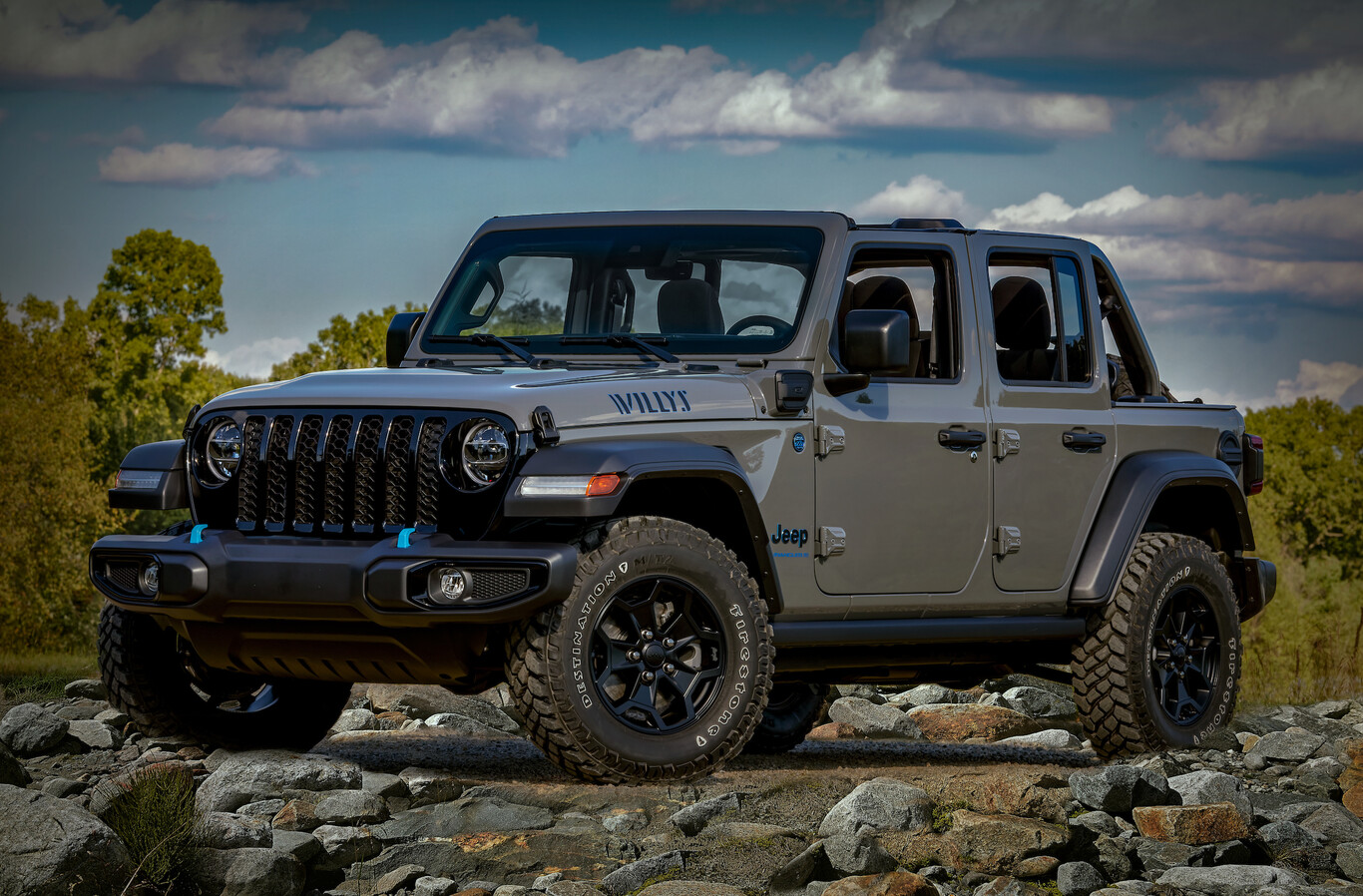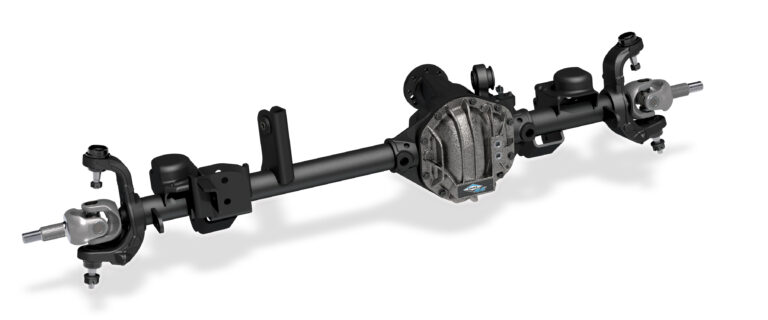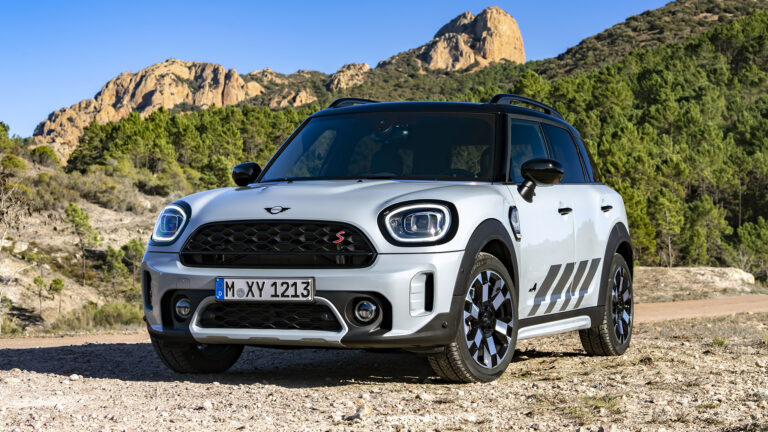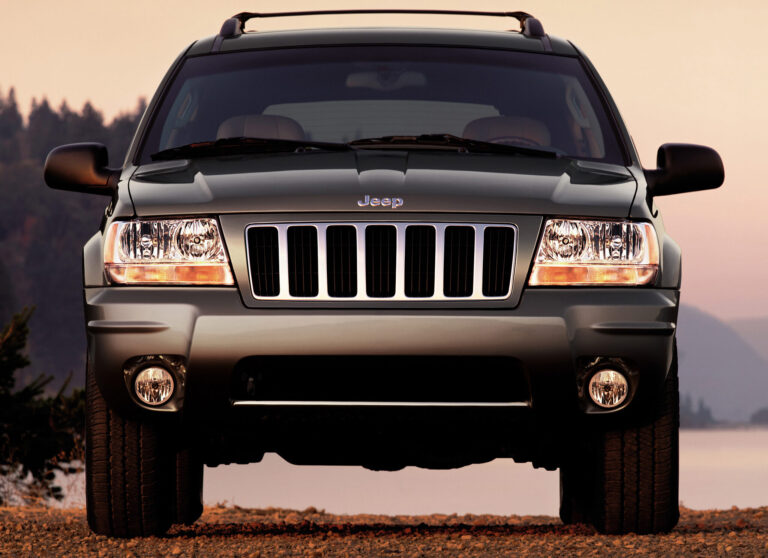Jeep Hard Rock Side Step Rock Slider For Sale: The Ultimate Guide to Protection and Functionality
Jeep Hard Rock Side Step Rock Slider For Sale: The Ultimate Guide to Protection and Functionality jeeps.truckstrend.com
The Jeep Wrangler, especially the revered Hard Rock edition, is synonymous with adventure, rugged capability, and the thrill of off-road exploration. While the Hard Rock models come impressively equipped from the factory, discerning owners often seek to further enhance their vehicle’s protection and utility. Among the most critical aftermarket upgrades for any serious off-roader is the Jeep Hard Rock Side Step Rock Slider. More than just an aesthetic enhancement, these robust components serve a dual purpose: safeguarding your vehicle’s vulnerable rocker panels from trail damage and providing a convenient step for easier entry and exit.
This comprehensive guide delves deep into everything you need to know about Jeep Hard Rock Side Step Rock Sliders, exploring their importance, the benefits they offer, key considerations when making a purchase, installation insights, and practical advice to help you find the perfect set for your beloved Jeep.
Jeep Hard Rock Side Step Rock Slider For Sale: The Ultimate Guide to Protection and Functionality
What Exactly is a Jeep Hard Rock Side Step Rock Slider?
At its core, a rock slider is a heavy-duty protective bar designed to mount along the side of a vehicle, typically underneath the doors and extending between the front and rear wheel wells. For a Jeep Hard Rock, these are specifically engineered to integrate seamlessly with its frame and body lines. Unlike flimsy side steps or running boards, rock sliders are built to withstand direct impacts from rocks, stumps, and other trail obstacles that would otherwise dent, scrape, or even puncture the vehicle’s rocker panels and lower doors.
The "Side Step" component indicates that many modern rock sliders incorporate a flat surface or integrated step, making it easier to climb into a lifted Jeep or access roof-mounted cargo. While the factory Hard Rock edition Jeeps often come with a Mopar rock rail, these are sometimes considered less robust for extreme off-roading compared to aftermarket options, or owners simply desire a more aggressive look and a more functional step.
Typically constructed from thick-gauge steel (e.g., 2" x 2" square tubing or 1.75" DOM round tubing) and often coated with a durable powder finish, these sliders are designed to absorb and deflect impacts, allowing your Jeep to "slide" over obstacles rather than getting hung up or sustaining damage. Their mounting systems are crucial, with the strongest options bolting directly to the vehicle’s frame, distributing impact forces across a strong structural component.
Why Do You Need a Rock Slider for Your Jeep Hard Rock? The Unrivaled Benefits
Investing in a high-quality rock slider for your Jeep Hard Rock offers a multitude of advantages that go beyond mere aesthetics:
- Superior Off-Road Protection: This is the primary function. When navigating challenging terrain, your Jeep’s rocker panels are highly susceptible to damage from rocks, logs, and high-centering. Rock sliders act as a sacrificial layer, absorbing impacts and preventing costly repairs to the bodywork, doors, and underlying chassis components like fuel lines or wiring. They allow you to confidently tackle obstacles that might otherwise cause hesitation.
- Functional Entry/Exit Step: Many rock sliders are designed with an integrated step surface. This is particularly beneficial for lifted Jeeps, making it easier for drivers, passengers, and children to enter and exit the vehicle comfortably. It also provides a stable platform for accessing roof racks or cleaning your windshield.
- Enhanced Vehicle Aesthetics: A well-designed set of rock sliders adds a rugged, aggressive, and purposeful look to your Jeep. They complement the Hard Rock’s already beefy appearance, signaling that your vehicle is ready for serious adventure.
- Increased Resale Value: A Jeep equipped with quality off-road armor is often more appealing to potential buyers, especially those looking for a capable trail rig. It demonstrates that the vehicle has been well-maintained and thoughtfully upgraded for its intended purpose.
- Protection Against Door Dings: In urban environments, rock sliders can offer a surprising benefit by acting as a barrier against runaway shopping carts or careless car door openings in parking lots, protecting your expensive paint and bodywork.
- Improved Recovery Points (on some models): Some rock sliders incorporate reinforced points that can be used as jacking points for a Hi-Lift jack, offering a stable and secure lifting location on uneven terrain, which is safer than jacking directly on the frame or axles.

![]()
Key Considerations When Buying a Jeep Hard Rock Side Step Rock Slider
Choosing the right rock slider requires careful thought. Here are the critical factors to evaluate before making a purchase:

Material and Construction:
- Steel (Mild or High-Strength): The most common and robust option. Mild steel (e.g., 0.120" wall thickness) is strong and affordable. High-strength steel (e.g., DOM – Drawn Over Mandrel) offers superior strength-to-weight ratio and is less prone to cracking under extreme stress.
- Aluminum: Lighter than steel, which can be beneficial for fuel economy and reducing unsprung weight. However, aluminum is generally less impact-resistant than steel and can be more expensive. It’s often preferred for overlanding setups where weight savings are critical, but less so for hardcore rock crawling.
- Tubing Diameter and Wall Thickness: Larger diameter tubing and thicker walls generally mean greater strength. Common sizes range from 1.75" to 2" diameter tubing.
-
Mounting System:
- Frame-Mounted: The gold standard for serious off-roading. These sliders bolt directly to the vehicle’s frame, distributing impact forces across the strongest part of the chassis. This offers maximum protection but usually requires drilling into the frame for installation.
- Body-Mounted: These attach directly to the body tub. While easier to install (often bolt-on), they offer less protection against severe impacts, as the body tub itself can be damaged. These are better suited for light trail use or as glorified side steps.
- Hybrid Mounting: Some designs utilize both frame and body mounts for a balance of strength and ease of installation.
-
Design and Functionality:
- Pure Rock Sliders: Minimal or no step, focusing solely on maximum ground clearance and protection. Often angled upwards to aid in sliding.
- Step Sliders (Hybrid): Integrate a flat step surface, providing both protection and easy access. These are popular for daily drivers that also see trail use.
- Angled vs. Flat: Angled sliders help the Jeep slide off obstacles, while flat sliders provide a wider step.
- Dimpled/Textured Surfaces: These enhance grip, especially in wet or muddy conditions, making the step safer.
-
Coating and Finish:
- Powder Coat: A durable, chip-resistant finish that provides excellent protection against rust and corrosion. Available in various colors, but typically black.
- E-Coat: An electrostatically applied primer coat, often followed by a powder coat, offering superior corrosion resistance.
- Bare Steel: Requires painting or coating by the owner but offers flexibility for custom finishes. It’s also cheaper upfront.
-
Compatibility: Ensure the slider is specifically designed for your Jeep Wrangler model (JK or JL) and door configuration (2-door or 4-door). While Hard Rock editions often share common chassis dimensions with other Wranglers, always double-check fitment.
-
Brand Reputation and Reviews: Stick with reputable manufacturers known for quality off-road products. Read reviews from other Jeep owners to gauge real-world performance and durability.
-
Budget: Rock sliders vary significantly in price based on materials, design, and brand. Set a realistic budget, but remember that quality protection is an investment.
Types of Rock Sliders Available for Jeep Hard Rock
While we’ve touched on some design aspects, here’s a clearer categorization:
- The OEM Mopar Rock Rails (Hard Rock Standard): Your Hard Rock likely came with these. They are decent for light-to-moderate trail use and provide some protection. However, they are often less stout than aftermarket options, may lack a convenient step, and some owners find their mounting points can be vulnerable.
- Aftermarket Pure Rock Sliders: These are typically heavy-duty, frame-mounted units with minimal protrusion, designed purely for protection. They often have an upward angle to maximize ground clearance and aid in sliding over obstacles. Examples include those from Poison Spyder, MetalCloak, and Rock Hard 4×4.
- Aftermarket Step Sliders (Hybrid): The most popular choice for many. These offer robust frame-mounted protection while incorporating a flat, functional step surface. They strike an excellent balance between trail capability and daily usability. Brands like Smittybilt, Barricade, and Aries offer popular hybrid options.
- Integrated Armor Systems: Some manufacturers offer full-body armor kits where rock sliders are integrated into a larger system of corner armor, fenders, and bumpers, providing comprehensive protection. These are often for extreme builds.
Installation Guide: General Tips for Your Jeep Hard Rock Side Step Rock Slider
While specific instructions vary by manufacturer and mounting type, here’s a general overview and tips for installation:
- Tools Required: Basic hand tools (wrenches, sockets), a torque wrench, possibly a drill (for frame-mounted), jack stands, and a floor jack. Safety glasses and gloves are essential.
- Safety First: Always work on a level surface. Securely support your Jeep with jack stands. If drilling is required, be aware of fuel lines, brake lines, and wiring.
- Read the Instructions: Thoroughly review the manufacturer’s installation manual before starting. Do not assume.
- Pre-Assembly: Lay out all components and hardware. Some sliders require minor assembly before mounting.
- Removal of OEM Components: If replacing factory rails, carefully remove them first. Keep the hardware as spares if you wish.
- Positioning and Alignment: This is crucial. Enlist a friend to help lift and position the heavy sliders. Ensure they are level and properly aligned with the frame and body lines. Use clamps or temporary bolts to hold them in place.
- Drilling (if frame-mounted): Mark holes precisely according to instructions. Start with a pilot hole and progressively increase drill bit size. Use cutting fluid to ease drilling and preserve bits. Deburr holes.
- Bolting and Torquing: Install all bolts loosely first. Once all bolts are in place and the slider is aligned, begin tightening them in a staggered pattern, following the manufacturer’s specified torque values. This ensures even pressure and prevents warping.
- Final Inspection: Double-check all bolts for tightness. Test the step for stability.
DIY vs. Professional Installation:
While many mechanically inclined individuals can install bolt-on or even frame-mounted sliders, professional installation is recommended if you’re uncomfortable with drilling, heavy lifting, or precise alignment. Shops specializing in off-road modifications have the right tools and expertise.
Maintaining Your Rock Sliders
Rock sliders are designed for abuse, but a little maintenance goes a long way in preserving their looks and functionality:
- Regular Cleaning: Wash off mud, dirt, and road salt regularly, especially after off-road excursions. This prevents corrosion and preserves the finish.
- Inspect for Damage: Periodically check for dents, scrapes, chips in the coating, or loose bolts.
- Touch-Up Paint: For powder-coated sliders, small chips can be touched up with automotive touch-up paint or spray paint to prevent rust from forming.
- Check Bolt Tightness: Vibration from driving (especially off-road) can loosen bolts. Periodically re-torque all mounting bolts to specifications.
Finding the Right Jeep Hard Rock Side Step Rock Slider For Sale
When you’re ready to purchase, here’s where to look and what to consider:
- Online Retailers: Large e-commerce sites specializing in Jeep parts (e.g., Quadratec, ExtremeTerrain, Northridge4x4) offer a vast selection, competitive pricing, and often free shipping.
- Specialty Off-Road Shops: Local or regional off-road shops often have experienced staff who can provide personalized advice, show you products in person, and even handle installation.
- Manufacturer Websites: Buying directly from the manufacturer can sometimes offer the latest models or specific configurations.
- Used Market/Forums: Check online forums (e.g., JL Wrangler Forums, JK Forum), Facebook Marketplace, or Craigslist. You might find good deals, but inspect items carefully for damage and ensure all hardware is included.
- Seasonal Sales: Keep an eye out for holiday sales (Black Friday, Cyber Monday, 4th of July) when many retailers offer significant discounts.
Tips for Finding Deals:
- Sign up for email newsletters from your favorite retailers.
- Compare prices across multiple vendors.
- Look for open-box returns or scratch-and-dent sales if you’re willing to accept minor cosmetic imperfections.
- Factor in shipping costs, as heavy items can be expensive to ship.
Price Table: Jeep Hard Rock Side Step Rock Slider Examples
Please note: Prices are estimated ranges and can vary significantly based on brand, material, design, features, and current market conditions. This table is for illustrative purposes only.
| Brand/Model Example (Illustrative) | Type | Material | Mounting | Key Features | Estimated Price Range (USD) |
|---|---|---|---|---|---|
| Smittybilt XRC Atlas | Step Slider (Hybrid) | Steel | Frame-Mounted | Aggressive styling, dimpled step plates, textured powder coat, integrated Hi-Lift jack points. | $500 – $800 |
| Barricade Rock Sliders | Step Slider (Hybrid) | Steel | Body-Mounted | Bolt-on installation, durable textured black powder coat, wide step surface, good value. | $350 – $600 |
| Poison Spyder Ricochet | Pure Rock Slider | Steel | Frame-Mounted | High-clearance design, angled upwards for sliding, optional bolt-on step, heavy-duty construction. | $800 – $1200+ |
| MetalCloak Frame-Built | Pure Rock Slider | Steel | Frame-Mounted | Modular design, high-strength steel, excellent ground clearance, known for extreme durability. | $900 – $1400+ |
| Rough Country DNR Steps | Step Slider (Hybrid) | Steel | Frame-Mounted | Durable black powder coat, integrated step, provides good protection and easy entry, budget-friendly option. | $400 – $700 |
| LOD Offroad Signature | Step Slider (Hybrid) | Steel | Frame-Mounted | Heavy-duty steel, durable finish, often includes integrated lighting options or more complex step designs. | $700 – $1100+ |
| Fab Fours ViCowl | Pure Rock Slider | Steel | Frame-Mounted | Unique, aggressive styling, heavy-duty protection, often part of a larger armor system. | $900 – $1300+ |
| Rock Slide Engineering Step | Power Step Slider | Steel | Frame-Mounted | Electric-powered deployable step, retracts for off-road clearance, provides both step and rock slider function. | $1500 – $2500+ |
Note: The "Estimated Price Range" reflects typical retail prices for a pair of sliders for a 4-door Jeep Wrangler. Prices for 2-door models may be slightly lower. Always verify current pricing with specific retailers.
Frequently Asked Questions (FAQ) About Jeep Hard Rock Side Step Rock Sliders
Q1: Do Hard Rock Jeeps already come with rock sliders?
A1: Yes, Jeep Hard Rock (and Rubicon) editions typically come equipped with Mopar-branded rock rails from the factory. While these offer a degree of protection, many serious off-roaders opt to replace them with more robust aftermarket solutions that offer greater strength, better ground clearance, or an integrated step.
Q2: What’s the main difference between a side step/running board and a rock slider?
A2: A side step or running board is primarily designed for ease of entry/exit and is usually body-mounted with lighter materials. They are not built to withstand direct impacts from rocks and can bend or damage the body tub if used as protection. A rock slider, conversely, is built from heavy-gauge steel, often frame-mounted, and engineered to take a direct hit from trail obstacles to protect the vehicle’s body. Many rock sliders also incorporate a step function.
Q3: Can I install rock sliders myself, or do I need professional help?
A3: Many bolt-on rock sliders can be installed by a competent DIY mechanic with basic tools. However, frame-mounted sliders that require drilling into the frame might be more challenging and are often best left to a professional off-road shop, especially if you’re not comfortable with precision drilling and heavy lifting.
Q4: Will rock sliders affect my Jeep’s ground clearance?
A4: Generally, no. True rock sliders are designed to tuck up tightly against the frame or body, minimizing their impact on ground clearance. In fact, by providing a strong surface to slide on, they can effectively improve your ability to clear obstacles without damage. Step sliders might slightly reduce ground clearance at the lowest point of the step, but it’s usually negligible for typical off-roading.
Q5: Are aluminum rock sliders strong enough for serious off-roading?
A5: While aluminum is lighter and resistant to rust, it is generally less impact-resistant than steel. For hardcore rock crawling where heavy impacts are expected, steel is usually preferred for its superior strength and ability to deform without catastrophic failure. Aluminum sliders are excellent for weight savings in overlanding builds or lighter trail use.
Q6: Do I need rock sliders if I don’t plan on doing extreme off-roading?
A6: Even for light trail use or daily driving, rock sliders offer benefits. They provide protection against accidental scrapes from curbs, parking lot mishaps, and unexpected obstacles on less challenging trails. The integrated step functionality is also a significant convenience for any lifted Jeep owner.
Q7: How do I know if a rock slider will fit my specific Jeep Hard Rock model?
A7: Always check the product description for compatibility. Most manufacturers specify the Jeep Wrangler generation (JK or JL) and door configuration (2-door or 4-door) the sliders are designed for. While Hard Rock editions are based on the Rubicon platform, confirming the exact fitment for your year and body style is crucial.
Concluding Summary
For any Jeep Hard Rock owner looking to maximize their vehicle’s capability and longevity, investing in a high-quality side step rock slider is an indispensable upgrade. These robust components offer unparalleled protection for your vulnerable rocker panels, transforming potential trail damage into mere scrapes that your armor can shrug off. Beyond their defensive capabilities, the integrated step provides practical functionality, making daily use and accessing your lifted Jeep a breeze.
By carefully considering material, mounting, design, and your specific needs, you can select the perfect set of sliders that not only enhance your Jeep’s rugged aesthetics but also provide the peace of mind to confidently conquer any terrain. Embrace the trails with the ultimate blend of protection and utility, knowing your Jeep Hard Rock is truly ready for anything.





